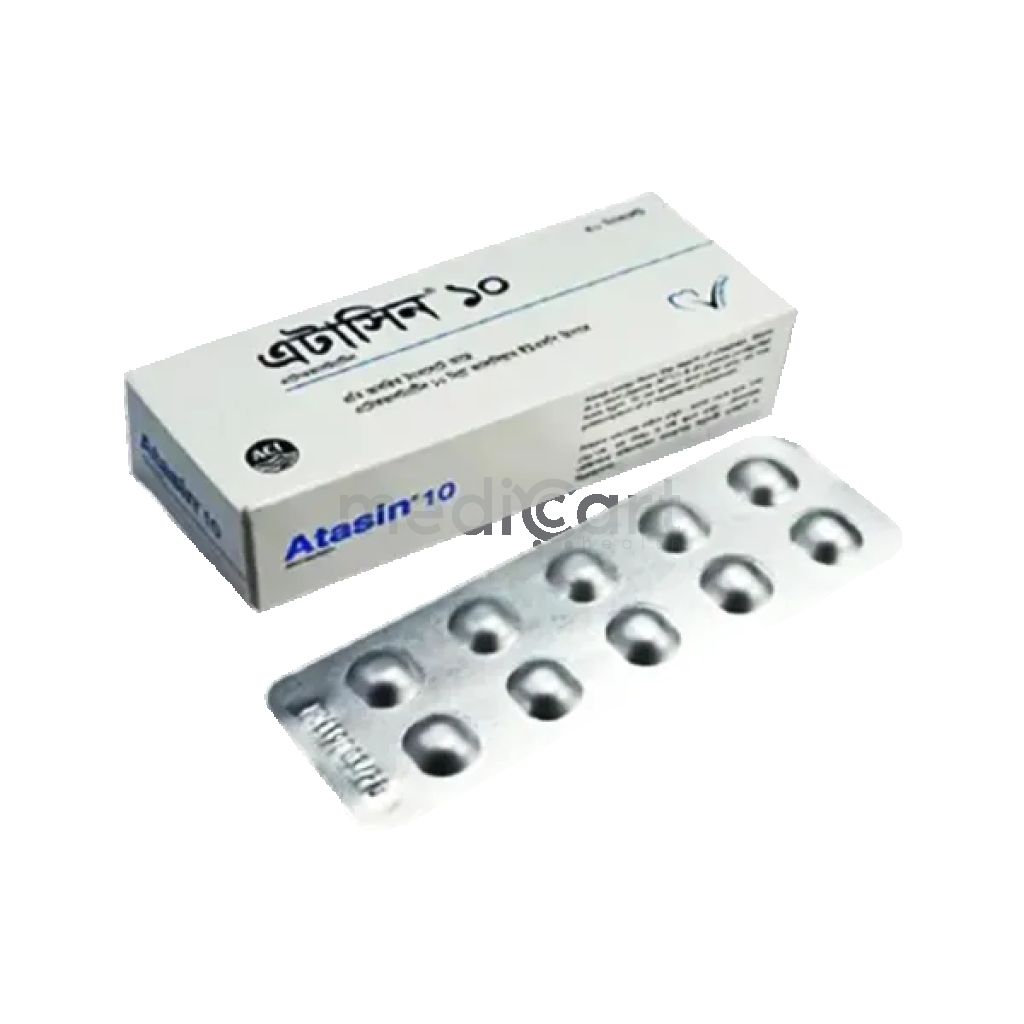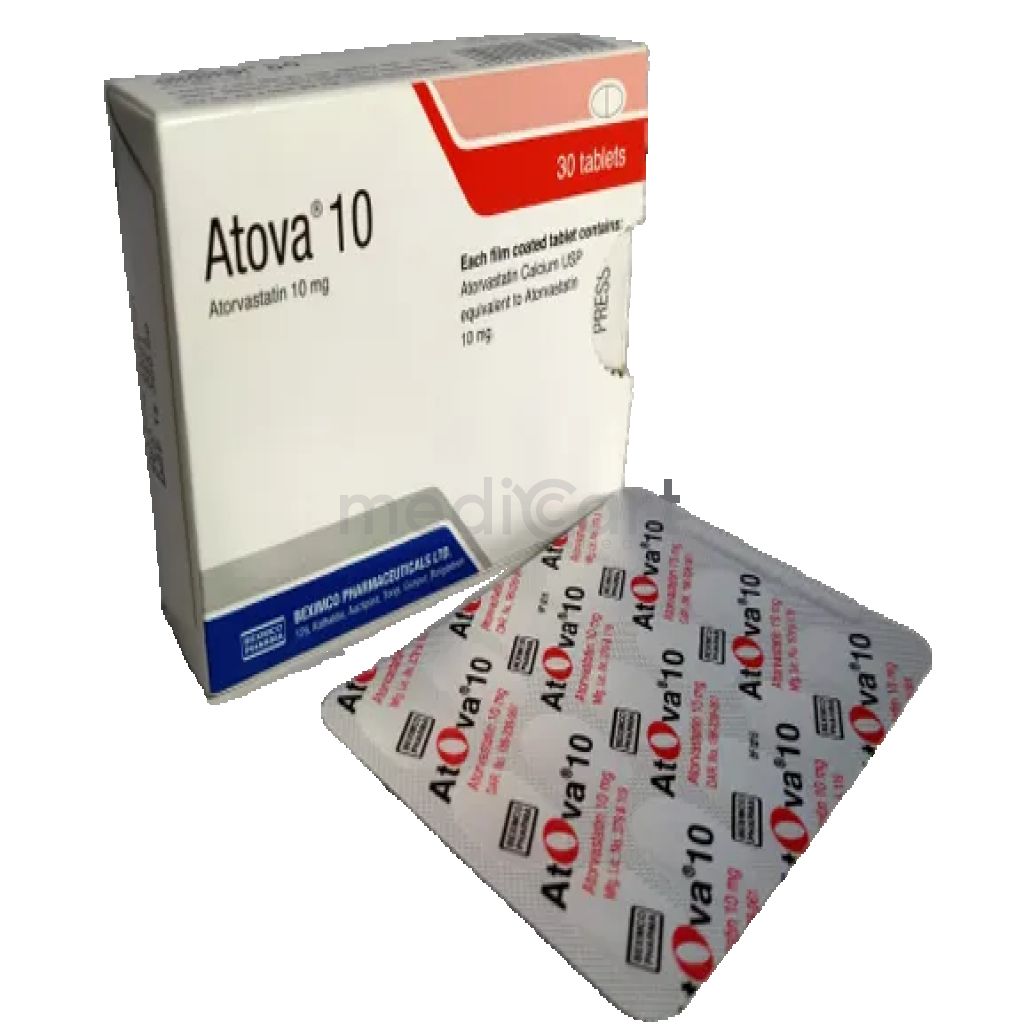

Stacor 20 mg Tab
Tablet* Delivery will be done in Dhaka city only.
More Information About - Stacor 20 mg Tab
Description
Generic Name
Atorvastatin
Precaution
Patients who consume substantial quantities of alcohol. History of liver disease. Patients with risk factors for myopathy or rhabdomyolysis. Hypothyroidism should be properly managed prior to starting statin therapy. Children <10 yr. Premenarcheal females. Lactation: Because of the potential for adverse reactions in nursing infants, women taking this drug should not breastfeed; contraindicated in nursing mothers.
Indication
Primary hypercholesterolemia (heterozygous familial and nonfamilial), Mixed Dyslipidemia, Homozygous familial hypercholesterolemia, Hypertriglyceridemia, Familial hypercholesterolemia, Cardiovascular event prevention, Primary dysbetalipoproteinemia
Contra Indication
Hypersensitivity, active liver disease or unexplained persistent elevations of serum transaminase, porphyria, pregnancy, lactation.
Dose
N/A
Side Effect
>10% Diarrhea (5-14%),Nasopharyngitis (4-13%),Arthralgia (4-12%) 1-10% Insomnia (1-5%),Urinary tract infection (4-8%),Nausea (4-7%),Dyspepsia (3-6%),Increased transaminases (2-3%),Muscle spasms (2-5%),Musculoskeletal pain (2-5%),Myalgia (3-8%),Limb pain (3-8%),Pharyngolaryngeal pain (1-4%) Frequency Not Defined Angina,Syncope,Dyspnea,Myopathy,Anaphylaxis,Stevens-Johnson syndrome,Myositis Potentially Fatal: Thrombocytopenia. Rhabdomyolysis with acute renal failure.
Pregnancy Category
Name : Not Classified
Description
FDA has not yet classified the drug into a specified pregnancy category.Mode of Action
Atorvastatin competitively inhibits HMG-CoA reductase, the enzyme that catalyses the conversion of HMG-CoA to mevalonate. This results in the induction of the LDL receptors and stimulation of LDL catabolism, leading to lowered LDL-cholesterol levels.
Interaction
May increase risk of myopathy and rhabdomyolysis w/ CYP3A4 potent inhibitor (e.g. HIV or HCV protease inhibitors, itraconazole, clarithromycin), fenofibrate, colchicines, fixed combination of lopinavir/ritonavir. May decrease plasma concentration w/ CYP3A4 inducer (e.g. rifampicin, efavirenz). May significantly increase AUC and peak plasma concentration of digoxin. Increased AUC for norethindrone and ethinyl estradiol. Potentially Fatal: Increased risk of myopathy or rhabdomyolysis w/ ciclosporin, gemfibrozil, telaprevir, tipranavir.
Pregnancy Category Note
Pregnancy Contraindicated for use in pregnant women since safety in pregnant women has not been established and there is no apparent benefit of lipid lowering drugs during pregnancy; because HMG-CoA reductase inhibitors decrease cholesterol synthesis and possibly the synthesis of other biologically active substances derived from cholesterol, therapy may cause fetal harm when administered to a pregnant woman; discontinue therapy as soon as pregnancy is recognized; limited published data are insufficient to determine a drug-associated risk of major congenital malformations or miscarriage Contraception Advise females of reproductive potential to use effective contraception during treatment Lactation Use is contraindicated during breastfeeding; there is no available information on effects of drug on breastfed infant or on milk production.; not known whether atorvastatin is present in human milk; it has been shown that another drug in this class passes into human milk and atorvastatin is present in rat milk; because of potential for serious adverse reactions in breastfed infant, advise women that breastfeeding is not recommended during treatment
Adult Dose
Oral Mixed dyslipidaemia, Heterozygous familial hypercholesterolaemia, Nonfamilial hypercholesterolaemia Adult: Initially, 10 or 20 mg once daily, may be adjusted at 4-wk interval. May initiate 40 mg once daily in patients who require >45% reduction in LDL-cholesterol. Max: 80 mg/day. Elderly: No dosage adjustment needed.
Child Dose
Oral Mixed dyslipidaemia, Heterozygous familial hypercholesterolaemia, Nonfamilial hypercholesterolaemia Child: Heterozygous familial hypercholesterolaemia: 10-17 yr 10 mg once daily, may increase at intervals of at least 4 wk to max 20 mg/day.
Renal Dose
Renal Insufficiency: Renal disease does not affect the plasma concentrations or LDL-C reduction of atorvastatin; thus, dosage adjustment in patients with renal dysfunction is not necessary.
Administration
Atorvastatin can be administered as a single dose at any time of the day, with or without food. Avoid excessive consumption (>1 L/day) of grapefruit juice.
Disclaimer
The information provided herein are for informational purposes only and not intended to be a substitute for professional medical advice, diagnosis, or treatment. Please note that this information should not be treated as a replacement for physical medical consultation or advice. Great effort has been placed to provide accurate and comprehensive data. However, Medicart along with its authors and editors make no representations or warranties and specifically disclaim all liability for any medical information provided on the site. The absence of any information and/or warning to any drug shall not be considered and assumed as an implied assurance of the Company.









